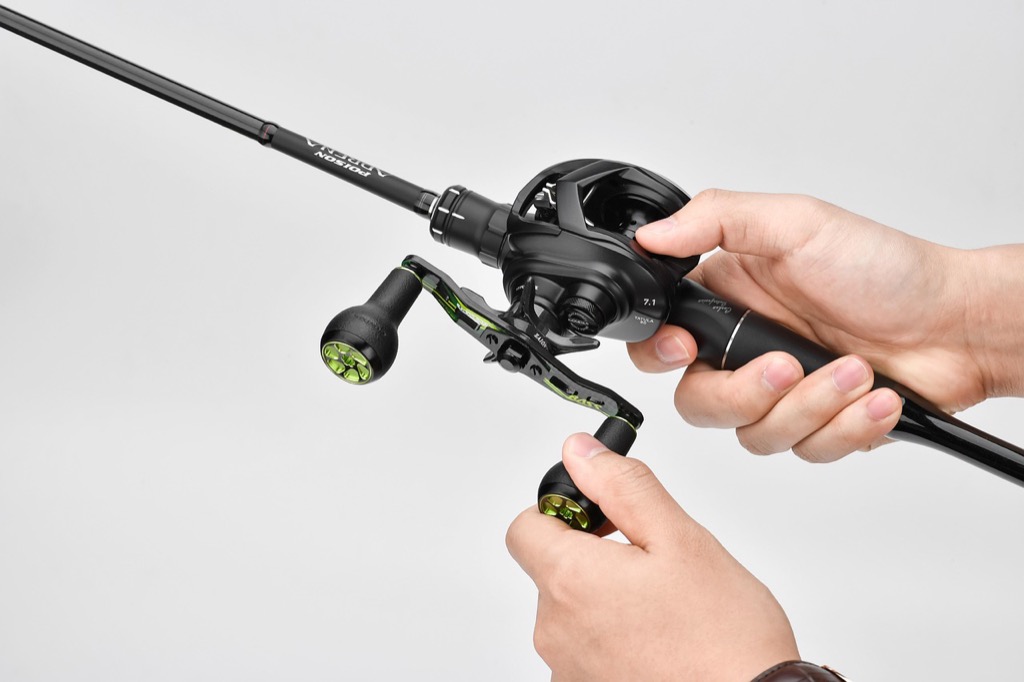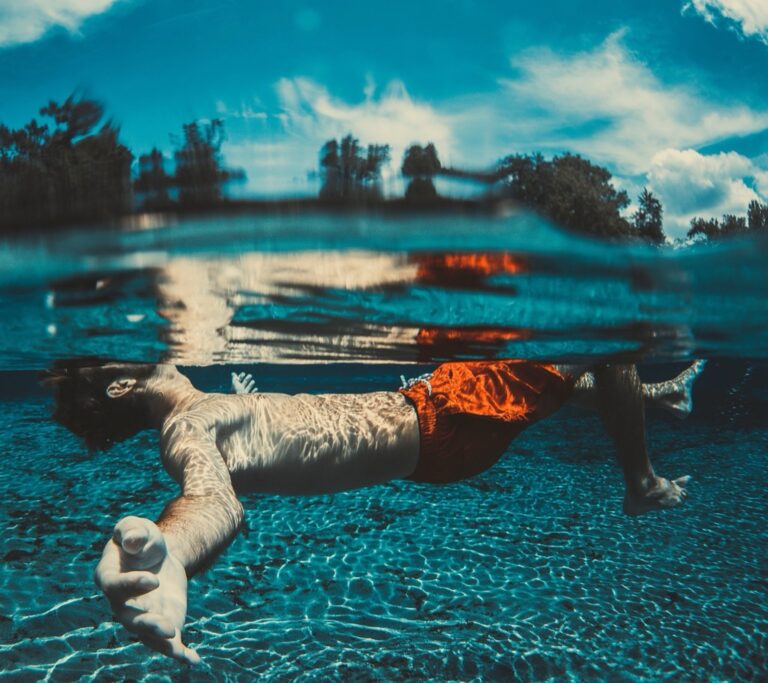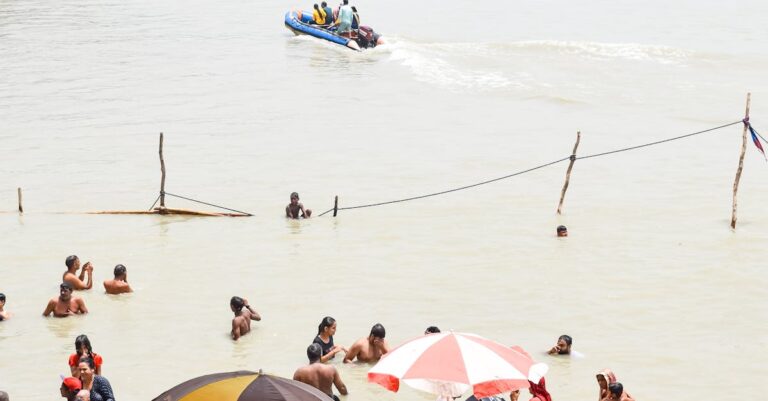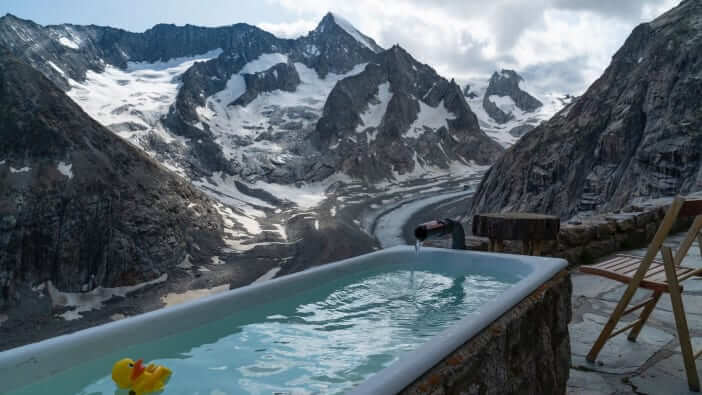7 Ways to Adapt Fishing Techniques to Weather Conditions Pro Anglers Use
Master fishing in any weather with expert techniques for sun, rain, wind, and cold. Adapt lures, timing, and tactics to boost your catch rates year-round.
Weather makes or breaks your fishing trip. You can’t control Mother Nature but you can adjust your approach to work with whatever conditions she throws at you. Smart anglers know that adapting their techniques to current weather patterns dramatically increases their chances of landing that trophy catch.
The difference between successful and frustrated fishermen often comes down to flexibility. Whether you’re dealing with bright sunshine high-pressure systems or stormy low-pressure fronts your fishing strategy needs to match the conditions. Understanding how fish respond to weather changes gives you the edge you need to stay productive on the water.
Disclosure: As an Amazon Associate, this site earns from qualifying purchases. Thank you!
Understanding How Weather Impacts Fish Behavior
Weather drives every aspect of fish behavior, from where they position themselves in the water column to when they decide to feed aggressively. You’ll catch more fish when you understand these patterns and adjust your approach accordingly.
Temperature Changes and Fish Activity Levels
Water temperature directly controls fish metabolism and movement patterns. Cold fronts slow fish activity dramatically, pushing them deeper and making them less likely to chase fast-moving lures. Warm weather increases their energy levels, creating feeding opportunities in shallow waters during early morning and late evening hours.
Barometric Pressure Effects on Feeding Patterns
Falling barometric pressure triggers intense feeding activity as fish sense approaching storms. You’ll experience some of your best fishing in the 12-24 hours before a weather front arrives. Rising pressure after storms often shuts down feeding completely, requiring you to downsize baits and fish slower presentations.
Water Clarity Variations During Different Weather
Storm runoff muddies water and reduces visibility, forcing you to switch to vibrating lures and bright colors that fish can detect through sound and vibration. Clear, stable weather creates gin-clear conditions where natural colors and finesse techniques become essential for fooling educated fish.
Adapting Your Approach for Sunny Weather Conditions
Bright sunshine creates high-pressure systems that push fish deeper and make them more selective about feeding. You’ll need to adjust your timing, tackle selection, and location strategy to maintain success during these challenging conditions.
Choosing the Right Time of Day for Clear Skies
Target the golden hours when fish are most active during sunny weather. Early morning from dawn until 9 AM offers cooler water temperatures and reduced light penetration that keeps fish feeding near the surface.
Late evening from 6 PM until dusk provides similar advantages as temperatures drop and insects become more active. Avoid midday fishing between 11 AM and 4 PM when bright sunlight drives fish to deeper water.
Selecting Appropriate Lures and Bait for Bright Conditions
Choose natural-colored lures that match the local forage in clear sunny water. Soft plastics in green pumpkin, watermelon, or brown mimic crawfish and worms that fish naturally feed on.
Downsize your presentation with smaller hooks and lighter line to avoid spooking fish in clear conditions. Live bait like nightcrawlers, minnows, or crickets often outperforms artificial lures when fish become finicky in bright sunlight.
Improve your garden with Uncle Jim's European Nightcrawlers! These large worms enhance soil structure and quality through superior composting and aeration, creating healthier, more productive gardens.
Finding Shade and Structure When Fish Seek Cover
Focus your efforts around docks, overhanging trees, and rocky outcroppings that provide shade during sunny days. Fish congregate in these cooler areas to escape direct sunlight and ambush prey.
Target deeper water structures like drop-offs, ledges, and submerged timber where fish retreat when surface temperatures rise. Use fish finders or topographic maps to locate these underwater sanctuaries that hold fish during bright conditions.
Find fish and structure with the Garmin Striker 4 fishfinder. It features CHIRP sonar for clear target separation and a waypoint map to easily navigate to your favorite spots.
Modifying Techniques for Overcast and Cloudy Days
Overcast conditions create ideal fishing environments that many anglers overlook. The diffused light eliminates harsh shadows and reduces fish wariness, extending your productive fishing hours significantly.
Taking Advantage of All-Day Fishing Opportunities
Cloudy skies eliminate the typical midday fishing slowdown you’d experience on bright days. Fish remain active throughout daylight hours since they don’t retreat to deeper cover or shade. You’ll find consistent feeding activity from dawn to dusk, making overcast days perfect for extended fishing sessions without timing concerns.
Adjusting Lure Colors for Low-Light Conditions
Low-light conditions require darker, more vibrant lure colors that create strong silhouettes against the gray sky. Use chartreuse, bright orange, or black lures that fish can easily spot in dim lighting. Avoid natural colors like brown or green that blend into the murky background and become nearly invisible to fish.
Targeting Active Fish During Stable Weather Patterns
Stable overcast weather keeps fish comfortable and predictable in their feeding zones. Focus on shallow to mid-depth areas where fish remain active instead of seeking deeper refuge. You’ll discover fish cruising flats, weed lines, and structure areas they’d typically avoid during bright sunny conditions.
Fishing Successfully During Rainy Weather
Rainy conditions create some of the most productive fishing opportunities if you approach them correctly. The key lies in understanding how precipitation affects fish behavior and adjusting your strategy accordingly.
Safety Considerations for Wet Weather Fishing
Lightning poses the greatest threat during stormy weather. Exit the water immediately when you hear thunder or see lightning flashes. Metal rods conduct electricity, making you a target even on shore.
Wear non-slip footwear with good tread patterns to prevent falls on wet surfaces. Carry waterproof emergency supplies and inform someone of your fishing location before departing.
Enjoy a natural, barefoot feel with these versatile shoes. The wide toe box promotes foot health, while the non-slip sole provides reliable traction for hiking, running, and water activities.
Capitalizing on Increased Fish Activity Before Storms
Fish feed aggressively as barometric pressure drops before storms arrive. This pre-storm feeding frenzy can last 2-6 hours and produces some of the best catches of the season.
Target areas where baitfish congregate during pressure changes. Use fast-moving lures like spinnerbaits and crankbaits to match the heightened activity levels of predatory fish.
Catch bass, trout, and more with these durable spinnerbaits. Featuring sharp treble hooks and premium blades for continuous flash and vibration, this 6-piece set offers a variety of colors for any fishing condition.
Adapting Equipment to Handle Wet Conditions
Waterproof your tackle box and electronics before heading out. Use sealed containers for hooks, weights, and lures to prevent rust damage that ruins equipment.
Organize your fishing gear with the Plano 3-Tray Tackle Box. It features three cantilever trays with adjustable compartments and dual top access for quick retrieval of small items.
Apply reel grease more frequently during wet weather fishing trips. Carry microfiber towels to keep your hands dry for better grip control when fighting fish.
PENN Reel Grease provides superior lubrication and rust protection for your reels. Formulated for wide temperature ranges, it ensures excellent performance and longevity.
Adjusting Your Strategy for Windy Conditions
Wind creates both challenges and opportunities on the water. Understanding how to work with these conditions rather than fighting them transforms windy days from frustrating outings into productive fishing adventures.
Using Wind to Your Advantage for Bait Presentation
Wind-driven currents push baitfish toward shorelines and structure, creating natural feeding zones. You’ll find active fish concentrated along windward banks where prey gets trapped against cover. Let the wind drift your bait naturally into these strike zones rather than fighting against the current with constant casting.
Selecting Heavier Lures and Tackle for Windy Days
Switch to 1/2-ounce or heavier lures when wind speeds exceed 10 mph for better casting control. Tungsten weights cut through wind more effectively than lead alternatives. Your rod selection matters too – medium-heavy to heavy action rods provide the backbone needed to punch through gusts and maintain line control.
Finding Wind-Protected Areas and Structures
Target the lee side of points, coves, and large structures where fish seek calmer water. These protected pockets concentrate both baitfish and predators in smaller areas, increasing your chances of success. Look for back sides of islands, deep creek channels, and timber lines that break wind patterns and create fishing sanctuaries.
Conquering Cold Weather Fishing Challenges
Cold weather transforms fish behavior dramatically, requiring you to abandon warm-weather tactics and embrace patience-focused strategies. Success in frigid conditions demands slower presentations, proper gear selection, and targeting deeper thermal refuges where fish concentrate.
Slowing Down Your Presentation for Sluggish Fish
Cold water slows fish metabolism by 50-70%, making aggressive retrieves counterproductive. You’ll need to crawl your lures at half-speed or slower, pausing frequently to trigger strikes from lethargic fish.
Switch to slow-rolling spinnerbaits, dragging jigs along bottom structure, and dead-sticking soft plastics for 10-15 seconds between movements. Fish won’t chase fast-moving baits when water temperatures drop below 50°F.
Choosing Cold-Weather Appropriate Gear and Clothing
Layered clothing systems prevent hypothermia while maintaining dexterity for handling tackle and landing fish. Wear moisture-wicking base layers, insulating mid-layers, and waterproof outer shells with ventilation zippers.
Neoprene gloves with fingertip cutouts keep hands warm while preserving line sensitivity. Pack hand warmers, insulated boots, and backup dry clothing in waterproof bags for extended cold-weather sessions.
Targeting Deeper Waters During Temperature Drops
Fish seek thermal stability in deeper waters where temperatures remain 5-10 degrees warmer than surface layers. Focus on 15-25 foot depths near drop-offs, channels, and underwater structures.
Use fish finders to locate temperature breaks and suspended schools in deeper basins. Target the thermocline layer where warmer water meets colder surface water, as baitfish and predators concentrate in these transition zones.
Managing Hot Weather Fishing Sessions
Hot weather presents unique challenges that require strategic adjustments to maintain productive fishing sessions. Successfully managing these conditions means adapting your timing, preparation, and location choices.
Timing Your Trips During Cooler Parts of the Day
Plan your fishing trips during dawn and dusk when temperatures drop significantly. Fish become most active during these cooler periods, typically between 5-8 AM and 6-9 PM. Avoid midday sessions when surface temperatures exceed 85°F, as fish retreat to deeper, cooler waters where they’re harder to reach.
Staying Hydrated and Protected from Heat
Drink water every 15-20 minutes, even if you don’t feel thirsty, to prevent dehydration. Wear lightweight, long-sleeved shirts and wide-brimmed hats to protect yourself from UV rays. Apply SPF 30+ sunscreen every two hours, focusing on exposed areas like your neck, hands, and face.
Focusing on Deeper, Cooler Water Locations
Target areas 15-25 feet deep where water temperatures remain consistently cooler throughout the day. Look for underwater structures like drop-offs, ledges, and creek channels that provide thermal refuge for fish. Use your depth finder to locate these temperature breaks where fish concentrate during hot weather periods.
Conclusion
Mastering weather-adapted fishing techniques transforms average anglers into consistently successful ones. You’ll discover that each weather condition offers unique opportunities when you understand how to adjust your approach accordingly.
The key lies in flexibility and preparation. You’ll maximize your success by monitoring weather patterns before heading out and packing the right gear for expected conditions. Remember that fish behavior changes dramatically with weather shifts.
Your fishing adventures don’t have to end when conditions become challenging. Instead they become opportunities to expand your skills and explore new techniques. Weather-conscious anglers consistently outperform those who stick to rigid approaches.
Start implementing these strategies on your next fishing trip. You’ll be amazed at how much your catch rates improve when you work with nature rather than against it.
Frequently Asked Questions
How does weather affect fish behavior?
Weather significantly impacts fish behavior through water temperature changes, barometric pressure shifts, and light conditions. Cold fronts slow fish metabolism and activity, while warm weather increases energy levels. Falling barometric pressure before storms triggers intense feeding, but rising pressure after storms typically decreases feeding activity. Fish also adjust their depth and positioning based on weather conditions.
What are the best times to fish on sunny days?
The optimal times for sunny day fishing are during the “golden hours” – early morning and late evening when fish are most active. Avoid midday fishing when bright sunlight drives fish deeper into the water. Focus on shaded areas and structures where fish congregate to escape the intense light and heat.
Should I use different lures for different weather conditions?
Yes, lure selection should adapt to weather conditions. In murky water caused by storms, use bright colors and vibrating lures. For clear conditions, choose natural colors that mimic local forage. On overcast days, darker and more vibrant colors work better in low-light conditions, while sunny days call for natural-colored lures.
Is fishing good during overcast weather?
Overcast weather creates excellent fishing conditions. The diffused light reduces fish wariness and eliminates the typical midday slowdown, allowing productive fishing throughout the day. Fish remain active in shallow to mid-depth areas, making them more predictable and easier to target with darker, vibrant lure colors.
Can I fish safely in the rain?
Yes, but safety is paramount. Avoid fishing during lightning and wear non-slip footwear for better traction. Carry waterproof emergency supplies and dress appropriately. Rain can actually increase fish activity, especially before storms when fish go into feeding frenzies. Target areas where baitfish congregate and use fast-moving lures.
How should I adjust my fishing technique in windy conditions?
Use wind to your advantage by targeting windward banks where wind-driven currents create natural feeding zones. Switch to heavier lures and tackle for better casting control. Focus on wind-protected areas like coves and structures where fish seek calmer waters. The wind can help oxygenate water and concentrate baitfish.
What changes should I make for cold weather fishing?
Slow down your presentation significantly as fish become lethargic in cold water. Use techniques like slow-rolling spinnerbaits and dragging jigs. Target deeper waters where fish seek thermal stability, typically 15-25 feet deep. Dress in layers and use insulated accessories to maintain warmth and dexterity while fishing.
How do I stay productive during hot weather fishing?
Plan trips during cooler parts of the day – dawn and dusk when fish are most active. Stay hydrated and protect yourself with lightweight clothing and sunscreen. Target deeper, cooler waters between 15-25 feet where fish seek refuge from rising surface temperatures. Avoid shallow areas during peak heat hours.








![7 Hidden Coastal Gems for Swimming in [Location] Locals Keep Secret](https://www.swimmerliving.com/wp-content/uploads/2025/06/g2c9e862194cb8ed9188b9659ece7d7c46a1114b2a6c20bba1eb29b27579cabd42ed1d2bb348b6bf5a08d96f8b3b3f2f6cf907ca539b567591ccf7fce62da807b_1280-768x1152.jpg)




